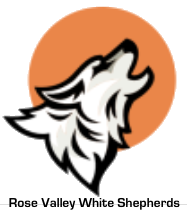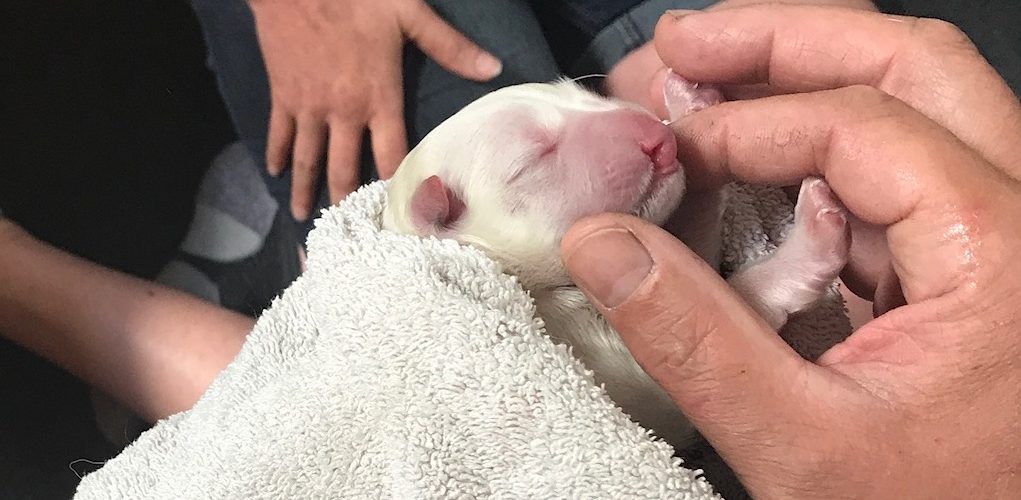Cleft lip and Palate in Puppies
Palatoschisis or Orofacial Clefts
This blog will be about Clifford, the White Swiss Shepherd puppy. On June 24th 2018, this little guy was born with a cleft lip and cleft palate. Since there’s not so much information to find on what to do as a breeder I decided to start blogging about it. You’ll find information here from how you find out you have such a puppy, how to make your decision, its relation with the mom and especially how what and how much to feed.
This information is just my opinion, my search on the web, my interpretation of the subject. It has no veterinary value since I’m ‘just’ an enthusiastic and animal lover and very proud to be a small breeder of the White Swiss Shepherd.
What is a cleft lip and cleft palate
 Cleft lip and cleft palate are birth defects. A cleft lip means that the lip does not join completely before birth and you’ll see an opening in the upper lip. A cleft palate means that the roof of the tooth does not join together completely during pregnancy. Unfortunately the incidence occurs more commonly in purebred dogs.
Cleft lip and cleft palate are birth defects. A cleft lip means that the lip does not join completely before birth and you’ll see an opening in the upper lip. A cleft palate means that the roof of the tooth does not join together completely during pregnancy. Unfortunately the incidence occurs more commonly in purebred dogs.
How does this happen
Before we started to breed our male Kenai with our female Nita we made sure they were healthy to breed. Tests were done and pedigrees were correct. The risk of cleft lip and/or palate is not caused by genetics DNA. Studies have proven that during the first 3 weeks of Nita’s pregnancy she has come in contact with poisons or a virus or it has something to do with her diet. We assume that during an unguarded moment she found her treats on the countertop – dried duck tenders… – She ate the full bag including the ‘silica gel package’ since it must have smelt good too ;(
Treatment
A day after Clifford was born we went to see our local vet. He mentioned a surgical closure of the lip and repair of the palate was necessary when he was about 16 weeks old. By that time his nose has had the time to grow and he would be old enough to endure a surgical procedure.
How to care for a newborn pup the first days and month
The information I found online was very overwhelming. The first info we found said:
The safest way to feed a cleft palate puppy is to tube-feed him!
Also happy with the information found since a step-by-step way to tube-feed can be easily found. However, we were lucky his palate was just behind his nose. This way we could bottle feed him using the long narrow nipple. Also here I found good YouTube material on how to prepare the bottle and the nipple. In my next post you’ll find more info on bottles and milk replacers.
Other important things you need are:
- a bulb syringe to suck out puppies mouth and nose if formula goes the wrong way
- puppy nursing kit
- puppy milk replacer formula
- a scale (monitoring his weight is essential)



